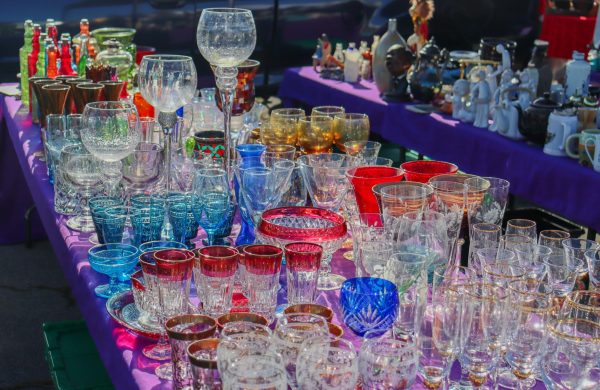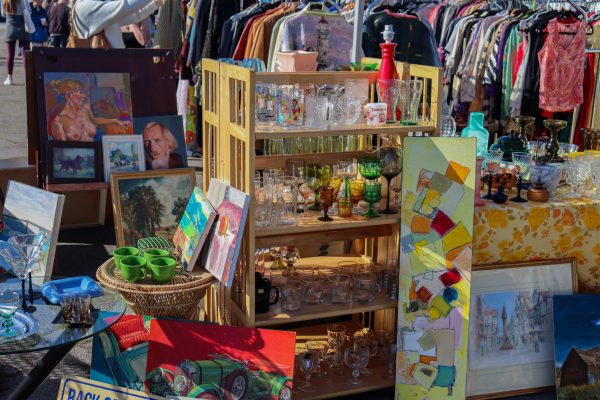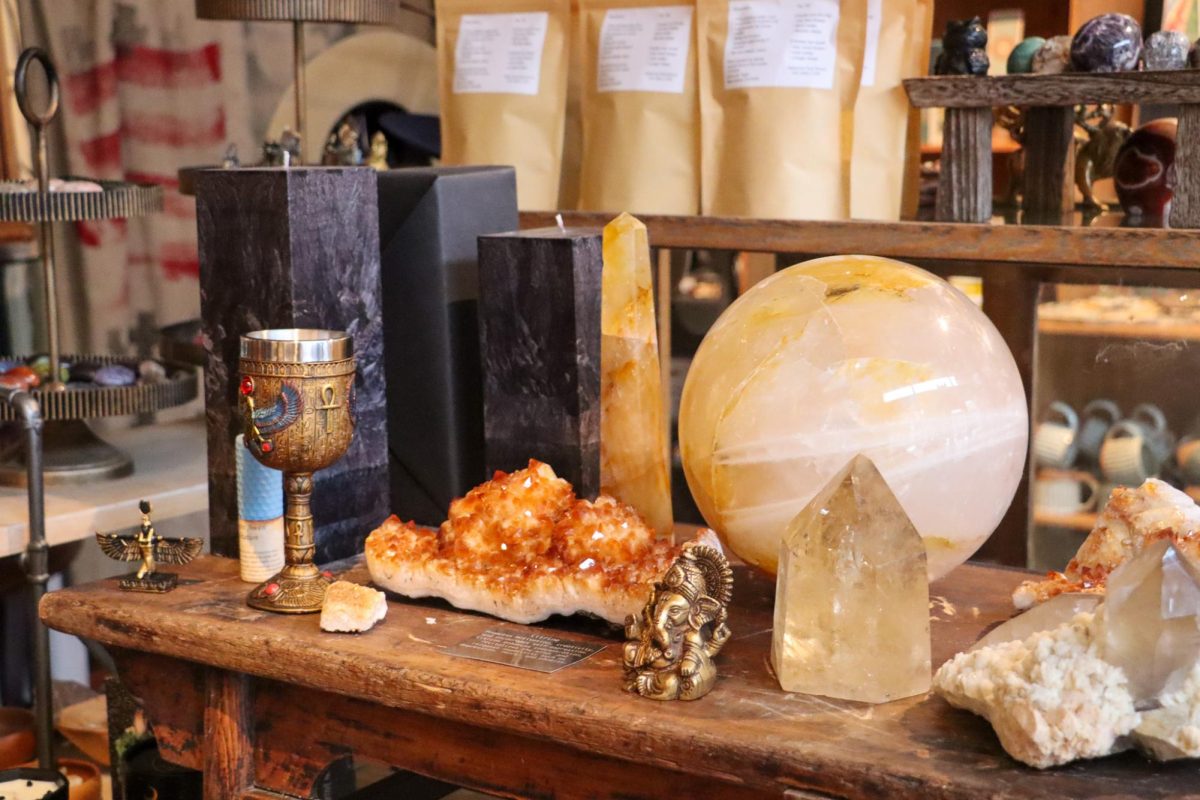For the last 24 years, the Alameda Point Antiques Faire has hosted vendors and shoppers from all corners of the world every first Sunday of the month. The faire boasts over 800 booths and welcomes more than 10,000 buyers, holding the title of the largest antique faire in Northern California.
The faire takes place at Alameda Point, a location that formerly housed the Alameda Naval Air Station. The faire displays vintage items from a wide range of vendors, including clothing, jewelry, furniture, books, art, and home decor. As well as filled by booths, the faire is lined on both sides by food trucks, providing a wide array of cuisine.

Each of the 800 booths at the faire is owned and run by individual vendors. One such vendor is Sam Wingenbach, a co-owner of Old Vintage 44, an antique clothing store in Redding, California that operates a booth at the monthly faire. According to Wingenbach, the antique faire’s exceptional variety attracts visitors from all over the world.
“[The faire is] extremely international, which brings a lot of different varieties of people and tastes,” Wingenbach said.
Named one of the best antique shows in the nation by multiple online reviewers, due to its discounted prices and vast selection of unique objects, the Alameda Point Antiques Faire’s sheer size lends to its appeal. Amid the numerous eclectic stalls, husband and wife duo Jennine and Brad Blachly own and operate Rethunk Vintage Junk, a booth that converts vintage, rundown furniture into modern styles.
“Some of it is mid-century furniture. We also do Art Deco and Victorian piece arts. [It really is] a variety of everything,” Jennine Blachly said.
The variety of items at the faire makes it able to appeal to numerous personal styles, allowing for an engaging and accessible form of sustainable shopping. It promotes the circulation of products where items are reused, repaired, and recycled rather than swiftly disposed of. Blachly finds that her business holds several of these benefits, both for consumers and the environment, preventing old furniture from being discarded.

“Older items may have some love on them, but they can be made into anything. That way it does not end up in the dump, and [we can] save everything,” Blachly said.
Lisa Russel, owner of Jewelry Girl Booth, buys vintage jewelry in Oregon and resells it at over 80 antique fairs all across California. She loves that her business promotes fashion sustainability.
“[The process is] totally green. It keeps us from buying new stuff at the mall. It just keeps things in circulation instead of ending up in landfills,” Russel said.
Secondhand stores offer unique items that may be unavailable in mainstream retail stores, adding vintage character to a buyer’s wardrobe or living space. Wingenbach believes the faire’s dedication to providing a space for secondhand items cultivates a community passionate about contributing to sustainability.

“I think people are tired of the Forever 21 stamp out sweatshirt, the already trending style. There’s so much [more] variety to curate your own look in vintage,” he said.
This creative freedom of personal expression entices a younger demographic to participate in flea faire shopping. According to Russel, there is an increasing appreciation for vintage items among younger generations.
“[There are] a lot of [young] people … who are starting to appreciate vintage. It’s great to see [the clothes] end up out here, and to keep it recycled,” she said.
In an age of rapidly changing trends, an appreciation for vintage and thrifted items is reemerging among teenagers. This cultural shift towards secondhand shopping is a vital and conscious effort towards sustainability and one that the Alameda Point Antiques Faire actively advocates for. The next faire is planned for Sunday, May 5th.











